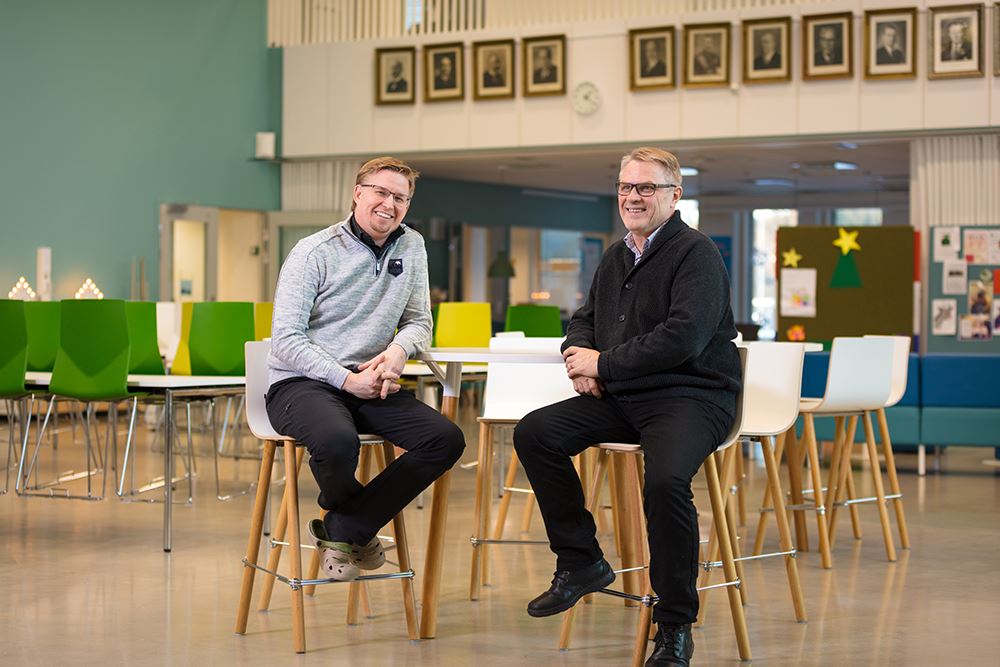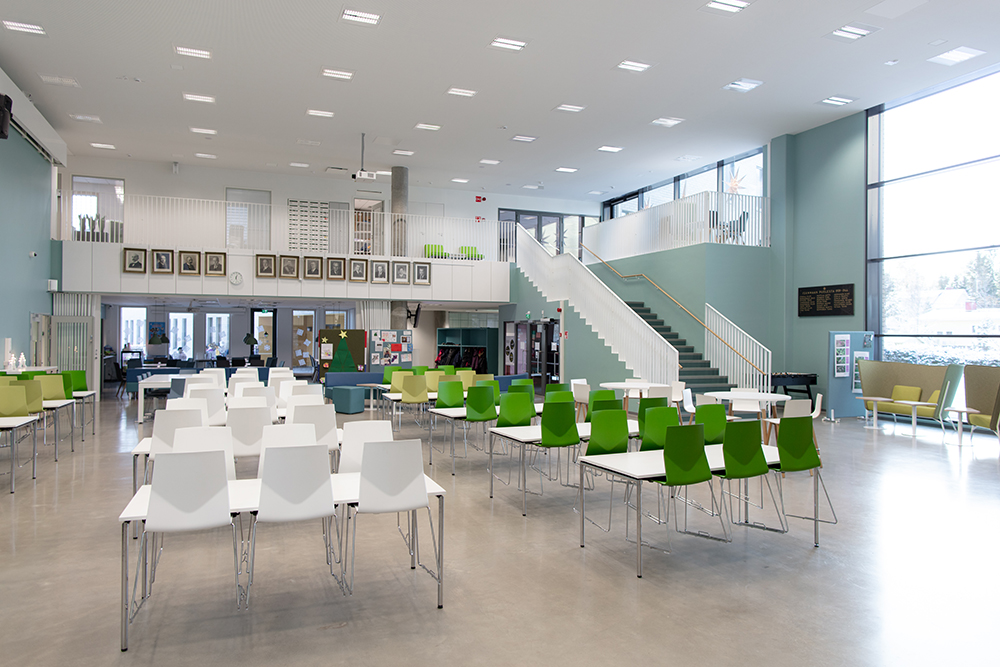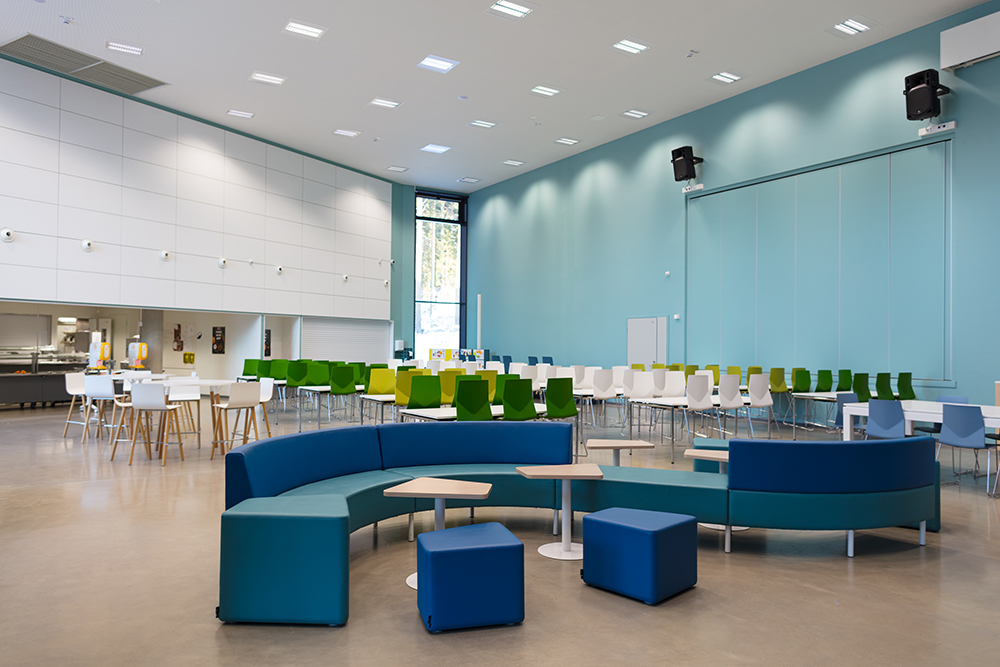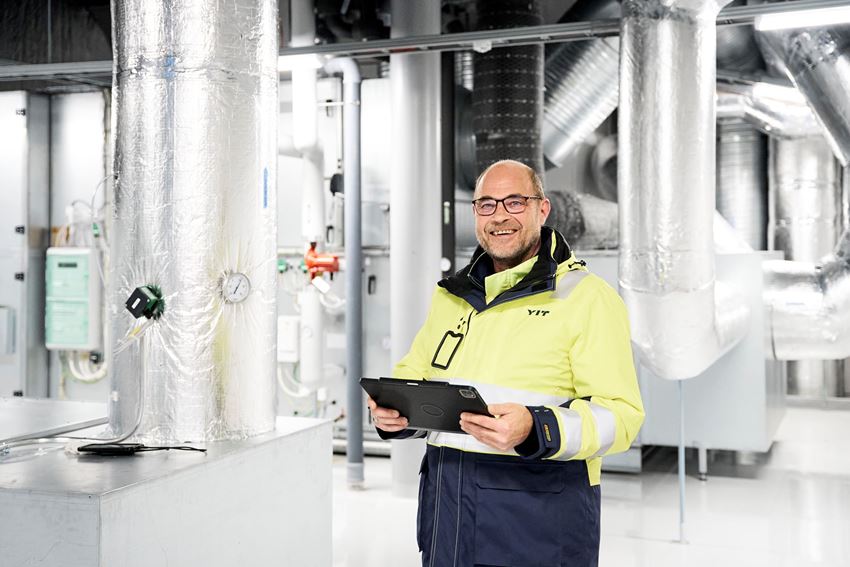Sustainable data centers as a service
- Work
- Premises
- Life Cycle Project
- 2/2/2020
Kalliola school reaps the benefits of life cycle construction
Life cycle construction has become more common in public construction projects that require both long service life for buildings and predictable maintenance costs. When the contractor is responsible for the maintenance and repair of the premises even after the completion of the project, the customer can focus on high-quality everyday life. The life cycle model was used in the Kalliola school in Hollola, to the benefit of school staff, students and the representatives of clients.

The Kalliola school was completed in 2017. It accommodates approximately 500 students. The primary school and classes 1–6 operate in the school building. The building is unique in Hollola, because in addition to teaching premises, it also houses the local library, health centre, child welfare clinic and youth services and a cafeteria for the community in the evenings. Aarne Ylipiha, Head of the Kalliola school, was most impressed with how well the project was executed as a whole.
“For us, the project started in 2014 when we first discussed the matter with municipal representatives, construction designers and school personnel. Together, we specified the goals what we wanted to achieve with the new learning environment and started working towards that goal in a determined manner. Now, when the project is completed, I can say that our experiences were excellent,” Ylipiha says, describing the process.
Tuomo Vesikko, Construction Manager at Hollolan Tilapalvelu Oy, was one of the key people in the project since the beginning. In his view, the planning stage required a lot of work, but the life cycle model managed to tackle many of the challenges of so-called traditional models. After 20 years, when the fixed-term agreement expires and the building is handed over to the client, everyone can rely on its good condition.

“The main reason why we selected the life cycle model was that it simplified matters a great deal. In this model, the same party is responsible for planning, implementation and the realisation of the agreed conditions throughout the project. Furthermore, areas of responsibility are clear in the life cycle model, and we can be sure that the end result is what we agreed upon. In traditional construction projects, this is not always the case, because we have to manage more than 10 different agreements and operators,” Vesikko explains.
Making implicit knowledge explicit in the planning stage
According to Vesikko, the negotiation stage of the procurement was extremely helpful for the client. The competitive negotiation procedure produced ample ideas for the new school building.
The last stage of the competitive tendering involved many experienced designers who proposed diverse and practical solutions.
“Being able to negotiate on possible solutions with several skilled designers gave us valuable insight into what we can achieve with our budget. Thanks to the negotiation procedure, we managed to create an overall plan that covered the uses and target conditions of the premises as well as many other practical aspects as far as possible,” Vesikko says.
School head Ylipiha was sceptical at the start of the planning stage. He questioned the schedule; the thorough preparation seemed too slow from his point of view. This is understandable, because the school was operating in temporary premises and in dire need of a new building. However, Ylipiha sees things differently now.
“We wanted to solve the acute problem quickly, but with hindsight, the schedule was just right. From the point of view of personnel, it was important that we could make preparations for involving people beforehand and divide the large project between different teams. We wanted to make all the implicit knowledge we have in-house explicit.”
In addition to the measures taken at the school, the Kalliola school personnel visited other schools and life cycle project sites. This gave them a good overview of the possibilities of renovated or completely new school buildings. The over 30 visits provided valuable lessons, some of which were adopted at the new Kalliola school.
“After visiting a number of sites, we realised that none of them was similar to our construction project. Instead, we made a list of their best features, whatever they might be: one site had a bulleting board system, another had nice ideas for open learning environments and one gave us tips on our in-house operating culture,” Ylipiha says.
“Is this really a school?”
YIT started constructing the Kalliola school in 2015, and after two years, the new school of Hollola was completed. Although the Kalliola school also has some traditional classrooms, its operating culture has been strongly influenced by new, adaptable premises. Ylipiha describes the transfer to adaptable spaces as a risk worth taking.
“We moved to the new school with mixed feelings, because none of us had experience of working in a similar building before. Of course, the children got used to the change quickly, and the personnel welcomed the opportunities of the new learning environment bravely. The process had a good start in the right direction. Everyone has been happy, although we still have room for improvement.”

Vesikko remembers a student who was in awe of the new furniture and interiors on the introductory day. The school cooperated with a furniture manufacturer to develop ten new models that only became available in the manufacturer’s catalogue after the project. The student could not believe that a school could have such furniture.
“The aim of the procurement was to promote adaptability, which means the same space can serve as a break room or a learning environment depending on the time of day. I heard one of our students giving feedback during the introductory tour: ‘Is this really a school?’ That’s when I felt that we had accomplished something worth attention,” Vesikko notes with a smile on his face.
Ylipiha points out that the environment plays a major role in shaping the culture. The new learning environment has enriched the internal operating culture in ways that could not have been achieved without the new premises. They have facilitated working and improved the prerequisites for learning.
“Open-plan learning environments were the backbone of this project, and we have made great strides in improving the prerequisites for learning. This was achieved through good cooperation between personnel, students, homes and the constructor. Each of us contributes to the wellbeing and comfort of people in the new premises.”
Life cycle model gains popularity in business premises projects








